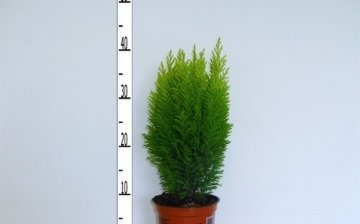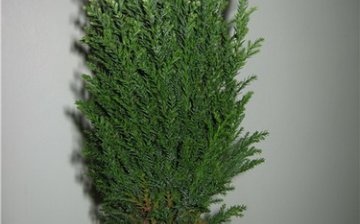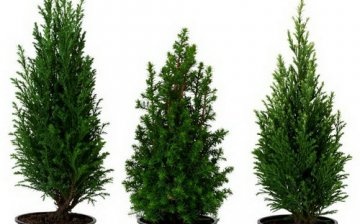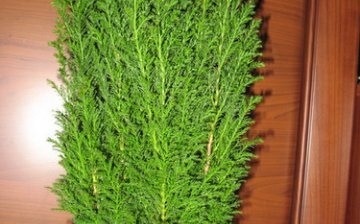Indoor cypress care
Everyone is familiar with the clean, healing air of coniferous forests, filled with the smells of resin. Thanks to him, a festive mood is created, which is associated with the New Year tree, childhood memories and anxious expectation of magic. Ornamental dwarf conifers help this sense of wonder to settle in a permanent home.
Content:
- Family of conifers
- Characteristics of cypress species
- Breeding opportunities
- Cypress care principles
- Compliance with growing conditions
Family of conifers
Conifers are presented pine and cedar, spruce and fir, juniper and thuja, as well as a large cypress family from California, of which 14 species are known. Among them, the indoor cypress is becoming more and more popular - a small evergreen plant that can decorate any interior.
By releasing phytoncides, this representative of conifers also cleans the room from pathogenic microbes and other pathogenic microflora, increases the content of oxygen and ozone, and repels insects.
Under natural conditions, a cypress tree can grow up to 70 centimeters in height, but the growth of indoor plants ranges from 20 to 40 centimeters. The trunk of the tree has a characteristic scaly brown or brown bark, and the branches are able to change. Young plants are covered with needles, which, as they mature, turn into pointed, scale-like leaves, the color of which depends on the variety.
Characteristics of cypress species
There are seven varieties of cypress, differing in color of needles and external shape.
- Lawson is the most popular, unpretentious species, has many subspecies. The color of the needles is green, blue, gray, brown, yellow and silvery;
- Pea - bred in Japan. Hardy enough. The leaves are bluish-blue, and the cones are brown with yellowness;
- The blunt cypress also comes from Japan. Leaves are dark green with orange cones;
- Funeral cypress is common in China. The leaves are grayish green and the buds are dark brown. The smallest among its relatives;
- Nutkansky came to us from North America. The needles are dark green or bluish-green, and at the top, drooping branches form an amazingly beautiful fan;
- The cypress is distinguished by a golden shade of bluish-green needles;
- Formosan is a fairly tall plant, with flat branches, brown leaves and elliptical cones.
Breeding opportunities
Cypress can be propagated using cuttings, layering, grafting and sowing the seeds of cones, each of which contains only a couple of seeds.
- In order for the seeds to sprout better, they are sown in the fall and exposed to frost, and by the spring they are placed in a warm place;
- Cuttings are cut in the spring from the tops of the lateral shoots and transferred to fertile soil;
- Vaccinations done according to the traditional method for the purpose of breeding new varieties;
- Bending down to the soil and cutting the lower shoots, layering. A pebble is placed in the place of the incision, and the shoot is fixed with staples. In autumn, a rooted young plant is cut off from the mother plant and planted separately.
Cypress care principles
Until recently, conifers were considered unsuitable for growing at home.But caring for an indoor cypress allows you to grow a beautiful and interesting coniferous plant at home. All conifers grow very slowly, and it is worth pruning the roots in early spring to limit growth. They can be placed as a backdrop for decorative deciduous and colorful plants.
Caring for a room cypress requires some investment. They take care of such a plant in the same way as for other conifers. They must be fed in spring with universal fertilizers, sprayed and watered sparingly, preventing the land from drying out. But every grower understands that the same care must be provided for other plants, so it is not so difficult to care for a cypress tree.
Compliance with growing conditions
To get a beautiful cypress, you need to pay a little attention to this plant. At the end of spring, it is better to take the cypress somewhere to fresh air, but it is necessary to cover it from direct rays and drafts. In winter, this plant needs a cool temperature, but it should not be lower than +5 degrees. You should not keep the tree next to the heating, as hot air has a detrimental effect on it.
For a cypress, a bright light is needed, but diffused. The plant can die in direct sunlight. It is necessary to water the plant abundantly until autumn, and in winter they begin to limit watering.
Dry air is very harmful for indoor cypress. In the summer, it is necessary to provide him with regular spraying.
If regularly pinch at the top of the shoots, cutting the roots, you can give the original shape to the plant at will. You cannot cut off the needles, and it is imperative to remove dried branches and leaves in spring so that the trees retain an attractive appearance and please with their presence.













